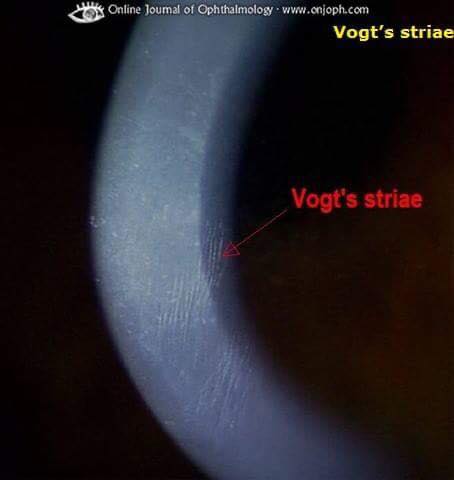Triads & Syndromes in Ophthalmology
Triads are usually a combination of three clinical features or signs, often used to describe various clinical conditions or diseases. Here we have compiled some of these triads used in ophthalmology.
Bálint's Syndrome= Simultanagnosia+ Optic ataxia+ Ocular motor apraxia
Behçet's Disease= Oral ulcers + Genital ulcers + Hypopyon uveitis
Cerebral Whipple's Disease= Somnolence + Dementia + Ophthalmoplegia.
Cone Degeneration= Progressive central acuity loss + Color vision disturbances + Photophobia.
Congenital Glaucoma= Epiphora + Blepharospasm+ Photophobia
Congenital Rubella Retinopathy= Cataracts+ Deafness + Congenital heart disease
Congenital Toxoplasmosis= Retinochoroiditis+ Hydrocephalus+ Intracranial calcifications
De Morsier's Syndrome= Short stature+ Nystagmus + Optic disc hypoplasia
Fechtner's Syndrome= Nephritis+ Sensorineural hearing loss+ Eye abnormalities
Gaucher Disease= Trismus+ Strabismus+ Opisthotonus
Horner's Syndrome= Ptosis+ Miosis + Ipsilateral anhidrosis of the face
Intraoperative Floppy Iris Syndrome=A flaccid iris stroma that undulates and billows in response to ordinary intraocular fluid currents+ A propensity for the floppy iris stroma to prolapse toward the phaco and side-port incisions, despite proper wound construction + Progressive intraoperative pupil constriction despite standard preoperative pharmacologic measures designed to maximize dilation
Kearns–Sayre Syndrome=External ophthalmoplegia + Pigmentary retinopathy + Cardiac conduction block during the first or second decade of life
Lambert–Eaton Myasthenic Syndrome=Muscle weakness+ Autonomic dysfunction+ Hyporeflexia
Miller-Fisher Syndrome=Ataxia+ Ophthalmoplegia+ Areflexia
Ocular Ischemic Syndrome=Midperipheral dot hemorrhages+ Dilated retinal veins + Iris neovascularization
Ocular Tilt Reaction=Skew deviation+ Cyclotorsion of both eyes + Paradoxical head tilt
Optic Nerve Sheath Meningioma=Optociliary venous shunts on the disc+ Diffuse disc edema (eventually replaced slowly by pallor)+ Insidious visual loss
Osteogenesis Imperfecta=Brittle bones+ Blue sclera+ Deafness (otosclerosis)
Pharyngoconjunctival Fever=Fever+ Pharyngitis + Acute follicular conjunctivitis
Pierre Robin Syndrome=Micrognathia+ Glossoptosis+ Cleft palate
Pigmentary Glaucoma=Corneal pigmentation (Krukenberg's spindle)+ Slit-like, radial, mid-peripheral iris transillumination defects+ Heavy accumulation of pigment in the trabecular meshwork
Presumed Ocular Histoplasmosis Syndrome=Peripapillary atrophy+ “Punched-out” chorioretinal lesions + Disciform macular scarring in young and middle-aged adults
Reiter's Syndrome=Arthritis+ Urethritis+ Conjunctivitis
Schwartz's Syndrome=Rhegmatogenous retinal detachment+ Uveitis+ Glaucoma
Sjögren's Syndrome=dry eyes+ dry mouth+ Arthritis (dry joints)
Spasmus Nutans=pendular nystagmus+ head nodding+ torticollis
Sturge-Weber Syndrome=Port wine facial telangiectasis (nevus flammeus) in the distribution of the trigeminal nerve that respects the vertical midline+ Ipsilateral glaucoma (ipsilateral buphthalmos)+ Contralateral seizures caused by ipsilateral leptomeningeal hemangiomatosis
UGH Syndrome=Uveitis+ Glaucoma + Hyphema
Source:EOphtha














